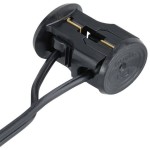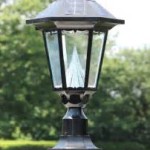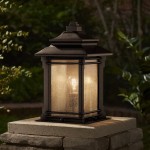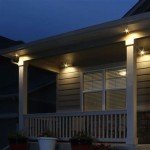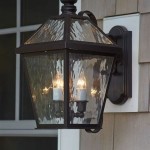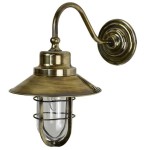Essential Aspects of Outdoor Can Lighting for Enhancing Your Landscape
Outdoor can lighting is a versatile and effective way to illuminate your outdoor space, creating a welcoming and functional atmosphere. Whether you're looking to enhance the aesthetics of your yard or improve safety and security, can lighting offers a range of benefits. Here are some essential aspects to consider when choosing and installing outdoor can lighting:
1. Types of Can Lights
There are two main types of outdoor can lights: uplights and downlights. Uplights are mounted on the ground and direct light upward, creating a dramatic effect that highlights trees, shrubs, and architectural features. Downlights, on the other hand, are mounted overhead and shine down, providing general illumination for walkways, driveways, and patios.
2. Beam Spread
The beam spread of a can light refers to the width of the light it emits. Narrow beam lights concentrate light in a specific area, while wide beam lights spread light over a wider range. Choose the beam spread that best suits your intended purpose; narrower beams for accent lighting and wider beams for general illumination.
3. Light Color
The color temperature of outdoor can lights can significantly impact the ambiance of your space. Warm white lights create a cozy and inviting atmosphere, while cool white lights provide a more modern and energizing look. Consider the overall design and aesthetic of your outdoor space when selecting the light color.
4. Wattage and Brightness
The wattage of a can light determines its brightness. Higher wattage lights produce more light, while lower wattage lights are more energy-efficient. Determine the desired brightness for your specific application and choose can lights with appropriate wattage.
5. Placement and Spacing
The placement and spacing of can lights is crucial for creating the desired effect. Downlights should be positioned to cast light evenly across paths and areas where illumination is needed. Uplights should be placed strategically to highlight specific features and create a sense of depth. Consider the height and direction of light when determining the optimal placement.
6. Power Source
Outdoor can lights can be powered by electricity or solar energy. Electric can lights require wiring and a transformer, while solar can lights are self-contained and harness energy from sunlight. The choice between electric and solar depends on the availability of electricity and the desired level of automation.
7. Installation
Proper installation is essential for the safety and longevity of outdoor can lighting. If you're not comfortable with electrical work, it's recommended to hire a qualified electrician. Follow all manufacturer's instructions carefully and ensure that all wiring is secure and protected from the elements.
Conclusion
Outdoor can lighting is a valuable tool for transforming your outdoor space into an inviting and functional area. By considering the essential aspects discussed in this article, you can choose and install can lights that meet your specific needs and enhance the beauty and safety of your landscape.

Guide To Choosing The Right Recessed Light Fixtures For Your Home Exterior

8 Outdoor Recessed Lighting Ideas For Your Porch Flip The Switch

Guide To Choosing The Right Recessed Light Fixtures For Your Home Exterior

Outdoor Recessed Lighting Guide Tutor

Didn T Get Them Installed While Your Home Was Being Built You Still Can These Recessed Lights W Outdoor Lighting Exterior

In Outdoor Recessed Lighting Pics Rustic Exterior Design

How To Install An Ultra Thin Led Downlight Outdoors 1000bulbs

Arch Outdoor Living Covered Patio Tongue And Groove Wood Ceiling Recessed Lighting Backyard Patios

Exterior Recessed Lights Can Add Value As Well Security And Beauty To Your Home At Minimal C House Outdoor Lighting

8 Soffit Lighting Ideas For Exterior Perfection Dekor
